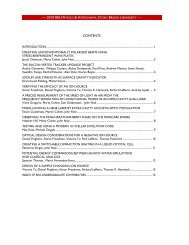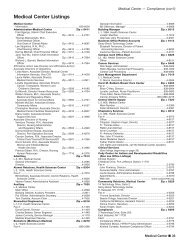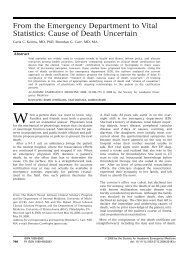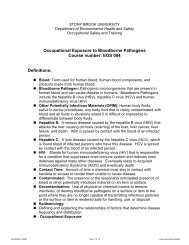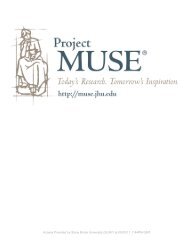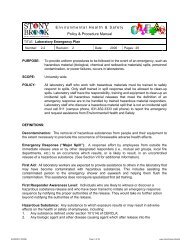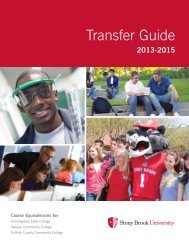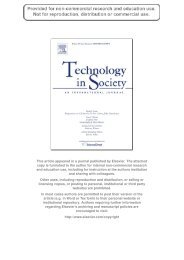Technological & Ethical Issues in Laboratory-Assisted Reproduction
Technological & Ethical Issues in Laboratory-Assisted Reproduction
Technological & Ethical Issues in Laboratory-Assisted Reproduction
You also want an ePaper? Increase the reach of your titles
YUMPU automatically turns print PDFs into web optimized ePapers that Google loves.
9<br />
Cryopreservation allows one to store embryos created <strong>in</strong> an <strong>in</strong>itial IVF cycle that would<br />
not be transferred back to the uterus. The couple can save those frozen embryos for future use <strong>in</strong><br />
a subsequent cycle, if pregnancy does not occur follow<strong>in</strong>g the <strong>in</strong>itial transfer of fresh embryos.<br />
Freez<strong>in</strong>g of embryos has given couples a greater choice as regards number of embryos they wish<br />
to transfer back to the uterus <strong>in</strong>itially. With the <strong>in</strong>creas<strong>in</strong>g awareness of the <strong>in</strong>cidence of high<br />
order pregnancy created by these techniques, there has also been a trend to establish criteria to<br />
transfer fewer embryos to the uterus at any time.<br />
Currently, <strong>in</strong> the United States, it is not<br />
uncommon to transfer a s<strong>in</strong>gle embryo, <strong>in</strong> women who are 37 years old or younger, if these are<br />
high quality and there are additional embryos that could be frozen for future use. In women <strong>in</strong><br />
their late-thirties, most programs would recommend the transfer of 2 embryos, and 2 or 3<br />
embryos are suggested <strong>in</strong> women who are 40 or older, as there is a greater likelihood of the<br />
creation of non-viable aneuploid embryos at this age.<br />
The overall likelihood of a triplet<br />
pregnancy follow<strong>in</strong>g the transfer of 3 embryos to the uterus is approximately 3 - 10%, depend<strong>in</strong>g<br />
upon a woman’s age. The ma<strong>in</strong> concern, should this occur, is the considerable risk of preterm<br />
labor and premature birth, with its associated risks to the newborn and need for long term<br />
neonatal ICU care.<br />
The <strong>in</strong>jection of sperm directly <strong>in</strong>to the ooplasm (ICSI), lead<strong>in</strong>g to fertilization of these<br />
eggs, is a major breakthrough that has <strong>in</strong>creased the ability of men with severe oligospermia to<br />
become fathers. While the majority of children born from this procedure are apparently healthy,<br />
they are only now reach<strong>in</strong>g their own reproductive age. There are some rema<strong>in</strong><strong>in</strong>g concerns of






